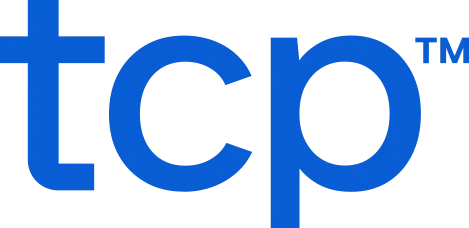Many organizations manage scheduling and time tracking separately which can lead to workforce inefficiencies, payroll errors, and unnecessary administrative work. By using disconnected systems, managers and HR teams spend hours manually reconciling schedules with timesheets, only to find discrepancies that disrupt productivity.
Organizations can eliminate these pain points by combining their employee scheduling and time tracking software. This results in streamlined operations, accurate payroll, and a better work experience for employees and managers alike. In this guide, we’ll explore the risks of managing employee scheduling and time tracking separately, the benefits to integrating the two, and what features to look for in your scheduling and time tracking software.
The difference between employee scheduling software and time tracking software
Employee scheduling and time tracking are often mistaken as interchangeable, but they serve distinct yet complementary functions in workforce management.
- Employee scheduling software helps organizations plan and organize shifts to ensure proper coverage, manage availability, and forecast labor needs. This helps organizations optimize staffing, minimize conflicts, and align workforce supply with demand.
- Time tracking software records actual hours worked, including start and end times, breaks, overtime, and paid time off. It ensures accurate payroll processing, regulatory compliance, and labor cost control.
Scheduling confirms shifts are planned and resources are allocated efficiently, while time and attendance tracking accurately records hours worked. Without both components working together, organizations risk inefficiencies that impact payroll, compliance, and overall productivity.
Both employee scheduling software and time tracking software serve distinct purposes but work best when they function together. They provide organizations with a way to manage workforce scheduling and track attendance accurately, allowing for better operational decisions and avoiding compliance violations.
The risks of managing scheduling and time tracking separately
When scheduling and time tracking operate in isolation, the gaps between planned shifts and actual hours worked become more pronounced. The disconnect leads to errors in payroll processing, compliance violations, and operational inefficiencies that strain an organization. For industries with dynamic shift patterns, such as healthcare and retail, failing to integrate these systems can result in costly mismanagement and employee dissatisfaction.
Inaccurate payroll
Scheduled shifts don’t always reflect actual hours worked. If time tracking isn’t integrated, discrepancies can result in overpayments or underpayments, leading to payroll errors and compliance risks. These mistakes cause financial strain for organizations, create employee dissatisfaction, and even lead to costly audits or fines.
For example, manufacturing employees may be scheduled for eight-hour shifts, but if their time isn’t accurately recorded, they may work overtime without proper compensation which exposes the organization to wage disputes and potential legal action.
Compliance complexity
Failure to accurately track overtime, breaks, and rest periods can result in labor law violations. Without an integrated system, organizations may inadvertently miscalculate overtime pay or fail to meet required labor regulations, exposing themselves to potential fines and legal disputes.
For example, healthcare organizations must carefully monitor shift hours to maintain compliance with labor laws governing rest periods for nurses and doctors. If breaks and overtime aren’t tracked correctly, organizations risk penalties and jeopardize employee well-being.
Without an integrated system, organizations may inadvertently miscalculate overtime pay or fail to meet required labor regulations, exposing themselves to potential fines and legal disputes.
Operational inefficiencies
Manually reconciling scheduled hours with actual worked hours makes tracking productivity, labor costs, and employee performance difficult and prone to mistakes. In addition, HR and payroll teams spend valuable hours cross-checking timesheets against shift schedules instead of focusing on strategic initiatives that impact the business.
In industries like retail and hospitality, these inefficiencies can lead to staffing shortages during peak hours, resulting in lost revenue and decreased customer satisfaction. Manually reconciling scheduled hours with actual worked hours makes tracking productivity, labor costs, and employee performance difficult and prone to mistakes.
Employee disputes
A lack of transparency between scheduled and actual hours can lead to disputes with employees over wages, overtime, and attendance records. Employees who feel their time is not tracked accurately may become frustrated and less engaged.
This is especially critical in industries with fluctuating schedules, such as construction or food service, where employees need confidence that their hours and wages are accurately recorded.
Benefits of having an integrated scheduling & time tracking solution
Organizations that integrate their employee scheduling software with their time tracking software experience greater efficiency, fewer errors, and improved workforce management. An integrated solution eliminates manual reconciliations, ensuring that planned schedules align with actual hours worked.
Here are a few of the benefits of integrating your employee scheduling software with your time tracking software.
Benefit 1: Streamlined workforce management
Integrating employee scheduling and time tracking software ensures that scheduled shifts automatically sync with actual hours worked, significantly reducing the risk of errors. This connection enhances payroll accuracy and minimizes administrative burdens.
Additionally, real-time employee attendance tracking allows managers to quickly identify and address absenteeism or coverage gaps, ensuring optimal staffing levels and improved operational efficiency. By leveraging automation, businesses maintain better oversight, reduce compliance risks, and foster a more organized and productive work environment.
Benefit 2: Improved payroll accuracy and compliance
By combining scheduling and time and attendance, companies increase payroll accuracy and compliance by ensuring that worked hours precisely match payroll calculations, reducing discrepancies and preventing costly overpayments or underpayments.
This automation not only streamlines payroll processing but also helps businesses maintain compliance with labor laws regarding overtime, breaks, and rest periods. By proactively enforcing these regulations, companies minimize the risk of fines and legal disputes, fostering a fair and transparent work environment while reducing administrative burdens.
Benefit 3: Enhanced employee experience and productivity
With an integrated scheduling and time tracking solution, your organization enhances the employee experience and boosts productivity by offering self-service portals that empower employees to check schedules, request shift changes, and clock in and out easily. This increased transparency fosters engagement and allows team members to take ownership of their work schedules.
Additionally, by reducing the administrative burden of manual scheduling and payroll tasks, managers can focus on driving organizational growth and strategic initiatives, creating a more productive and forward-thinking workplace.
Benefit 4: Data-driven decision making
By leveraging employee scheduling and time tracking software, organizations can make smarter, data-driven decisions that improve workforce efficiency. These solutions provide valuable insights into labor costs, overtime trends, and scheduling inefficiencies, allowing businesses to optimize workforce allocation and control expenses.
Additionally, HR teams and managers can rely on real-time data rather than guesswork when making staffing decisions, leading to better resource management, improved efficiency, and a more strategic approach to workforce planning.
Key features to look for when integrating employee scheduling software with time tracking software
Not all employee scheduling and time tracking solutions are created equal. While every organization has unique needs when it comes to scheduling and time and attendance tracking systems, there are a few key features that you’ll want to ensure your platforms have to maximize efficiency and compliance.
Organizations should look for software that includes:
- Automated scheduling and shift planning – Smart scheduling tools that adjust for availability, workload demands, and compliance requirements.
- Real-time time tracking and geofencing – GPS-enabled tracking to verify attendance and prevent time fraud.
- Payroll and HR software integrations – Seamless connections with payroll providers to ensure accurate and timely wage calculations.
- Compliance tracking – Built-in safeguards for overtime calculations, break tracking, and labor law adherence.
- Mobile accessibility – Easy access for employees and managers via mobile apps, enabling schedule changes and clock-ins on the go.
How integrating employee scheduling software and time tracking software is a no brainer
Adopting an integrated scheduling and time tracking solution isn’t just about convenience — it’s a game changer for overall workforce management. Organizations that move away from manual processes or disconnected systems often see significant improvements in payroll accuracy, compliance, and employee satisfaction.
From reducing payroll errors to streamlining shift management, organizations across industries have realized measurable benefits by implementing an integrated solution. Here are a few impactful results:
- Reduced payroll errors and processing time: A public school district in Minnesota experienced a 50% reduction in payroll processing time after implementing an automated time and attendance system.
- Significant time savings in scheduling: A study at a Belgian hospital implementing automated scheduling for radiation therapy patients found an 80% reduction in average patient waiting time, while a health simulation center in North Carolina reduced time spent on employee scheduling by 50% with an integrated system.
- Maintained compliance and reduced overtime costs: A school district with over 11,000 employees used an integrated solution for “unprecedented accuracy” when it comes to employee time.
Choosing an employee scheduling and time tracking software for your organization
With so many workforce management solutions, selecting the right one for your organization can feel overwhelming. The best software should streamline scheduling and time tracking and integrate seamlessly with your existing payroll and HR systems. Additionally, it should align with your industry’s specific needs, whether you operate in healthcare, retail, manufacturing, or another field with dynamic scheduling demands.
Finding the right fit requires evaluating features, scalability, and compliance capabilities. Whether upgrading from manual processes or switching from a disconnected system, assessing your options will verify long-term efficiency and cost savings. Here’s what to consider when making your choice:
- Organization size and industry-specific needs – Consider whether the software supports complex scheduling for healthcare, retail, or manufacturing industries.
- Integration capabilities – Confirm the system connects with payroll, HR, and compliance tools to streamline operations.
- Budget and scalability – Look for a solution that meets current needs while offering room for growth as your organization expands.
Level up with integrated time tracking software and employee scheduling software from TCP
Organizations that combine employee scheduling and time tracking into a single solution gain greater efficiency, improved compliance, and enhanced employee satisfaction. Through a combined approach that eliminates manual processes and reduces errors, these companies can now focus on strategic initiatives rather than administrative burdens.
If your organization is ready to optimize workforce management, consider exploring an integrated scheduling and time tracking system. A free trial or demo can help you find the right fit for your needs and set the stage for a more productive, compliant, and engaged workforce.
TCP Software’s employee scheduling and time and attendance solutions are flexible and scalable to accommodate your organization and employees as you grow.
From TimeClock Plus, which automates even the most complex payroll calculations and leave management requests, to Humanity Schedule for dynamic employee scheduling that saves you time and money, we have everything you need to meet your organization’s needs, no matter how unique.
Plus, with Aladtec, we offer 24/7 public safety scheduling solutions for your hometown heroes.
Ready to learn how TCP Software takes the pain out of employee scheduling and time tracking? Speak with an expert today.





